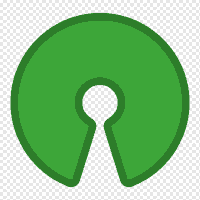
OpenRemote
- 0 ratings

Open-Source IoT Platform - IoT Asset management, Flow Rules and WHEN-THEN rules, Data visualization, Edge Gateway.
Self-host this app for $0.99/mo only!
Source · Documentation · Forum · Issues · Docker Images · OpenRemote Inc.
Welcome to OpenRemote; an intuitive user-friendly 100% open source IoT platform. You can build a complete IoT device management solution including: device management and auto provisioning, customisation of asset types, automation via when-then, flow, javascript and groovy rules, data analytics, connectivity via several protocol agents and manager APIs (e.g. MQTT broker, HTTP/REST, WS), Multi-tenancy (realms), Users and roles management, Edge gateway, Front-end UI web components and consoles, and an Insights dashboard builder.
As the code base is 100% open source, applications are limitless. Here's an architecture overview:

You can quickly try the online demo with restricted access, login credentials are smartcity:smartcity:
The quickest way to get your own environment with full access is to make use of our docker images (both amd64 and arm64 are supported).
1. Make sure you have Docker Desktop installed (v18+).
2. Download the docker compose file:
OpenRemote Stack (Right click 'Save link as...')
3. In a terminal cd to where you just saved the compose file and then run:
docker-compose pull
docker-compose -p openremote upUsername: admin
Password: secret
The URL you use to access the system is important, the default is configured as https://localhost if you are using a VM or want to run on a different port then you will need to set the OR_HOSTNAME and OR_SSL_PORT environment variables, so if for example you will be accessing using https://192.168.1.1:8443 then use the following startup command:
BASH:
OR_HOSTNAME=192.168.1.1 OR_SSL_PORT=8443 docker-compose -p openremote up -dCMD:
cmd /C "set OR_HOSTNAME=192.168.1.1 && set OR_SSL_PORT=8443 && docker-compose -p openremote up -d"Try creating assets, agents, rules, users, realms, etc. using the Manager UI, please refer to the wiki for more information, some things to try:
Persistent data is stored in a PostgreSQL DB which is stored in the openremote_postgresql-data docker volume which is durably stored independently of the running containers (see all with docker volume ls).
If you want to create a backup of your installation, just make a copy of this volume.
For information and how to set up a development environment, see the Developer Guide.
We work with Java, Groovy, TypeScript, Gradle, Docker, and a wide range of APIs and protocol implementations.
We follow the Github Flow workflow with tags and releases for published versions of our components; when working on the codebase create descriptive branch names (e.g. feature/cool_feature_x, hotfix/flux_capacitor, issue/123, etc.).
When your changes are complete then create a Pull Request ensuring that your branch is up-to-date with the source branch and that code changes are covered by tests and that the full test suite passes.
Join us on the community forum.
Please login to review this project.
No reviews for this project yet.
Open-source IoT Platform - Device management, data collecti…
Home Automation System that lets you monitor and configure …
FHEM is used to automate common tasks in the household like…
Comments (0)
Please login to join the discussion on this project.